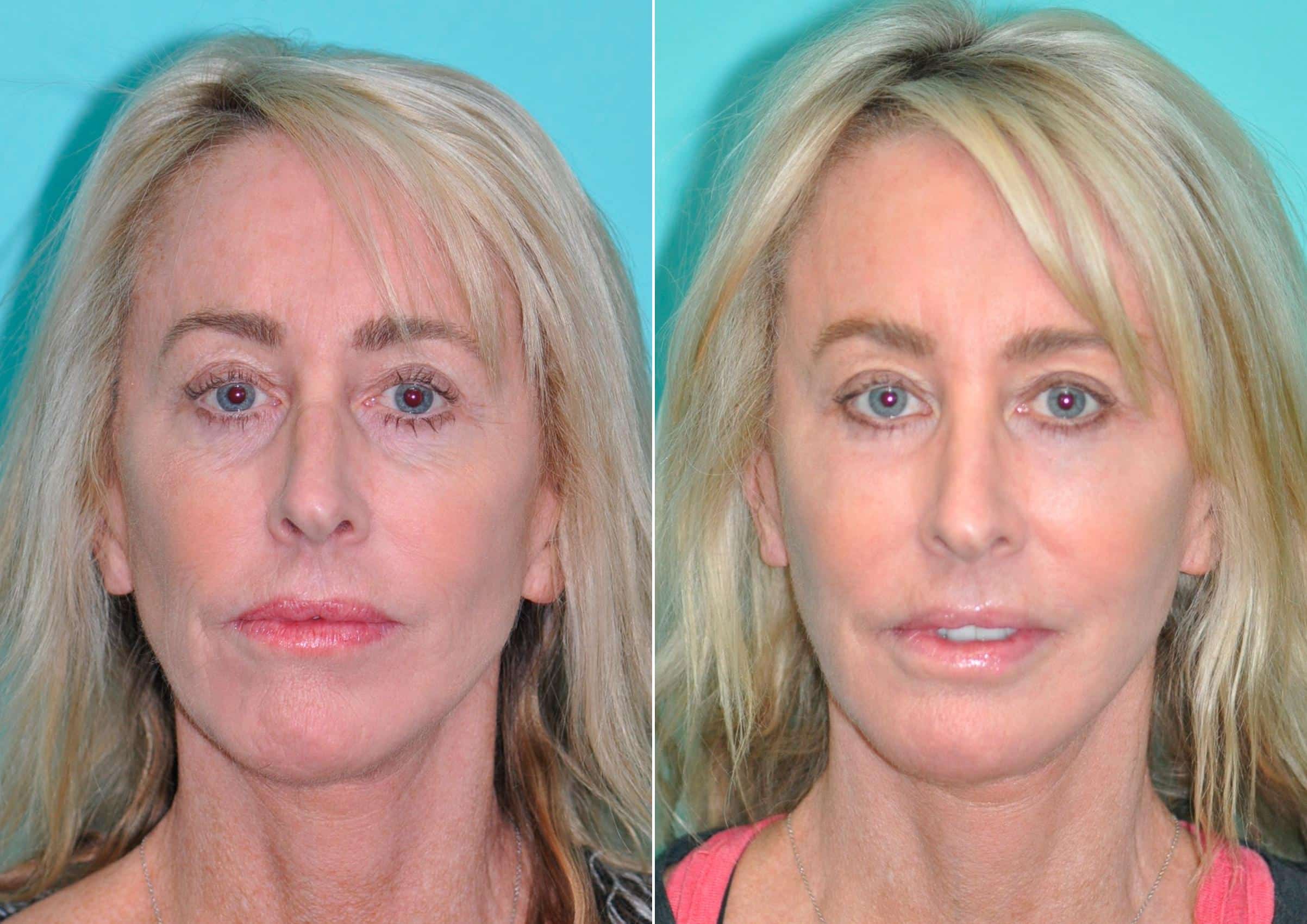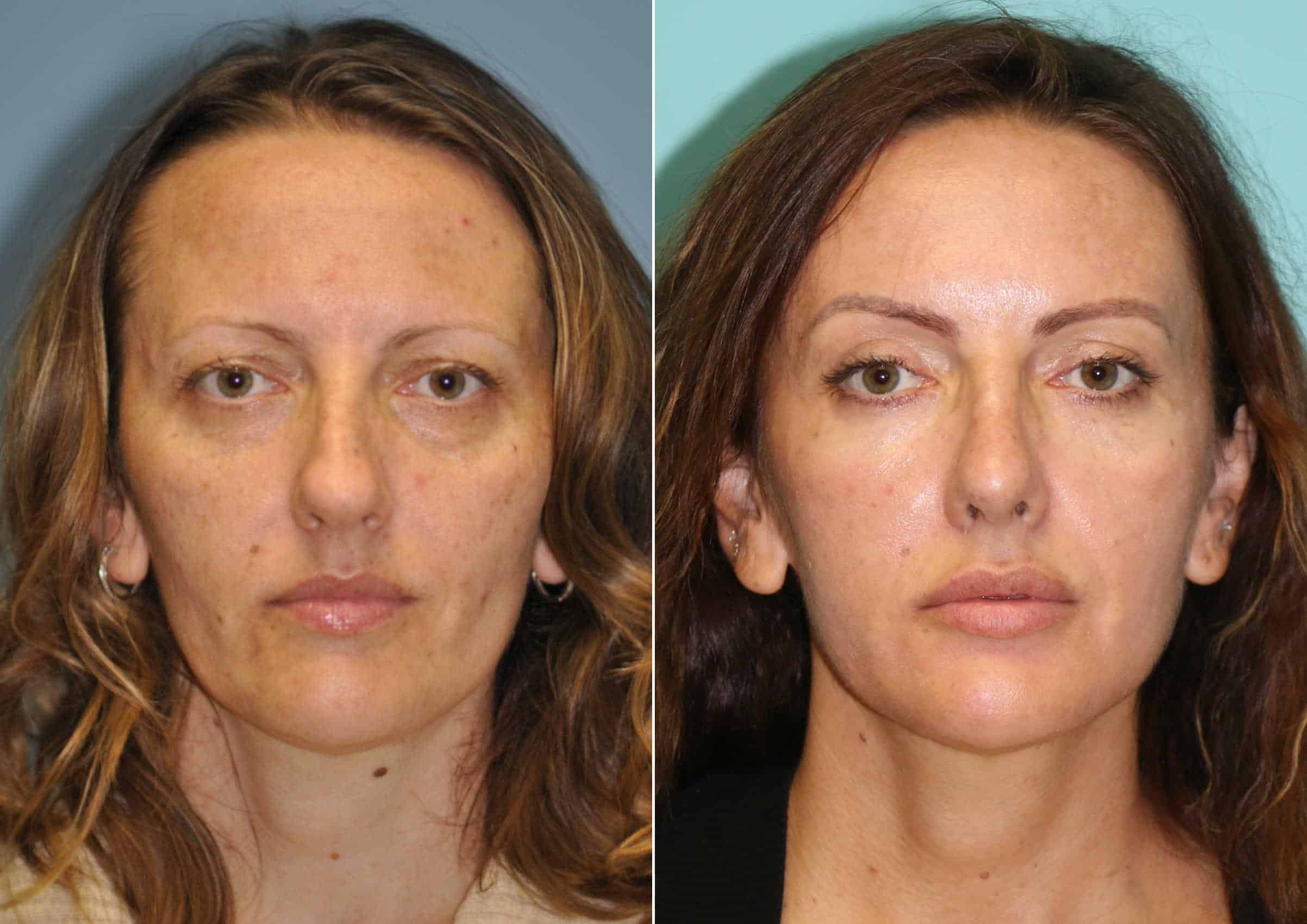Fat Transfer in Virginia, Washington D.C. and Maryland.
Embark on a journey of aesthetic excellence with The Naderi Center. Experience unparalleled artistry and precision for transformative beauty.
Achieve Youthful Fullness with Fat Transfer Benefits
Experience the transformative benefits of Fat Transfer – a remarkable cosmetic solution that goes beyond conventional enhancements. Harnessing the power of your body’s own fat, this procedure rejuvenates, sculpts, and revives your natural beauty with minimal downtime.
Natural Rejuvenation
Bid farewell to wrinkles and hollows as your own fat restores youthful contours, ensuring a softer, fuller, and smoother appearance.
Long-Lasting Results
Enjoy sustained beauty with fat's enduring presence, offering a lasting solution that enhances curvatures when used for buttock, hips, and breast regions.
Minimal Discomfort
Embrace a comfortable recovery, as Fat Transfer's gentle approach means less pain and shorter downtime, letting you get back to life swiftly.
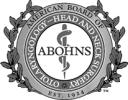

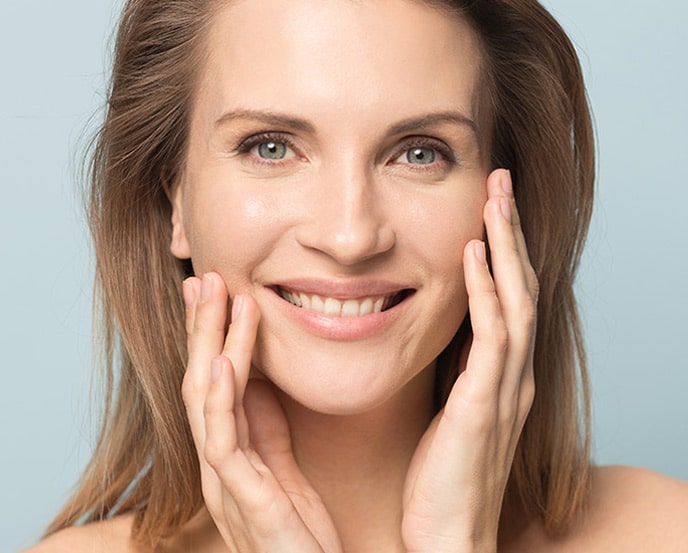
What is a Fat Transfer?
Fat injections are performed when more volume is desired in a part of the body, such as the face, breasts, or buttocks. The patient’s own fat cells are removed from undesirable areas like the hips, abdomen, and thighs and transferred to areas where a fuller appearance is desired. Fat injections are often a solution for individuals that have developed postoperative contour irregularities and scarring. Although not all of the fat that is grafted will survive in its location, significant portions of the fat cells do live, allowing for noticeable changes in tissue volume.
Fat injections have been performed historically since the late 19th century, however only in the last thirty years has this procedure been improved to increase the longevity of the results. It was not until the 1990s when world-renowned plastic surgeon, Dr. Sydney Coleman, published standardized techniques for fat extraction, processing and injection. In the last two decades liposuction contouring and fat grafting have become one of the more commonly performed procedures in cosmetic plastic surgery.
Fat injections are a natural, safer, and longer lasting alternative to dermal filler injections. Typically fillers need to be repeated every 6-12 months, whereas fat injections can last a patient for years to come. In the long run fat transfer may prove to be a more cost-effective means of achieving desired facial and body enhancements.
Fat Transfer Expected Results
- Softer, fuller, and smoother appearance of fat injected areas
- Enhanced curvatures when used for buttock, hips, and breast regions
- Restored facial volume where it has been lost and overall more youthful appearance
Fat Transfer Summary

Minor discomfort
MAC (monitored anesthesia care) or general anesthesia, or local anesthesia in the office
90 minutes
Small incision is made in the donor area and fat is removed through gentle liposuction. A small needle is used for fat injection sites at a few designated area of the face, which typically heal without any scars on the face
2 weeks
1 week
2-3 weeks
$6,000 – $10,000
Ideal Candidate for Fat Transfer Procedure
Good Candidates for Fat Injections
- Have facial volume loss either through aging, disease process, or genetics
- Desire a more curvy and lifted appearance to the buttock
- Desire a subtle breast augmentation but do not want breast implants
- Have enough fatty tissue in parts of the body that can be used to harvest for the fat transfer
- Are in good physical health and have reasonable expectations from their procedure
Surgical Techniques with Fat Transfer
With any fat transfer procedure there are three basic steps to performing the procedure.
Care is taken when harvesting the fat to ensure as many healthy, living fat cells survive the process as possible. This may be the most important step in the procedure, if the surgeon is not gentle and careful with their technique the fat cells taken are less likely to survive in their new location.
The survival of the fat and longevity of the results depend on multiple factors that include surgeon’s skill and experience, methods for harvesting the fat, fat purification methods, and final location of fat injections. On average 30-50% of the fat injected survives and lasts indefinitely. Fat that is injected in areas that have more blood supply such as the face, typically survive better than regions that have less blood supply such as buttocks.

Harvesting
Using a thin cannula fat is extracted using a liposuction device. Fat is typically removed from the hips, inner or outer thighs, lower back, or lower abdomen.

Purification and Transfer
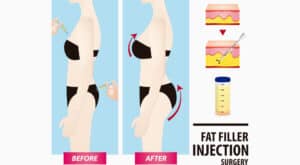
Grafting of Fat
Surgical technique is important for longer lasting results
The survival of the fat and longevity of the results depend on multiple factors that include surgeon’s skill and experience, methods for harvesting the fat, fat purification methods, and final location of fat injections. On average 30-50% of the fat injected survives and lasts indefinitely. Fat that is injected in areas that have more blood supply such as the face, typically survive better than regions that have less blood supply such as buttocks.
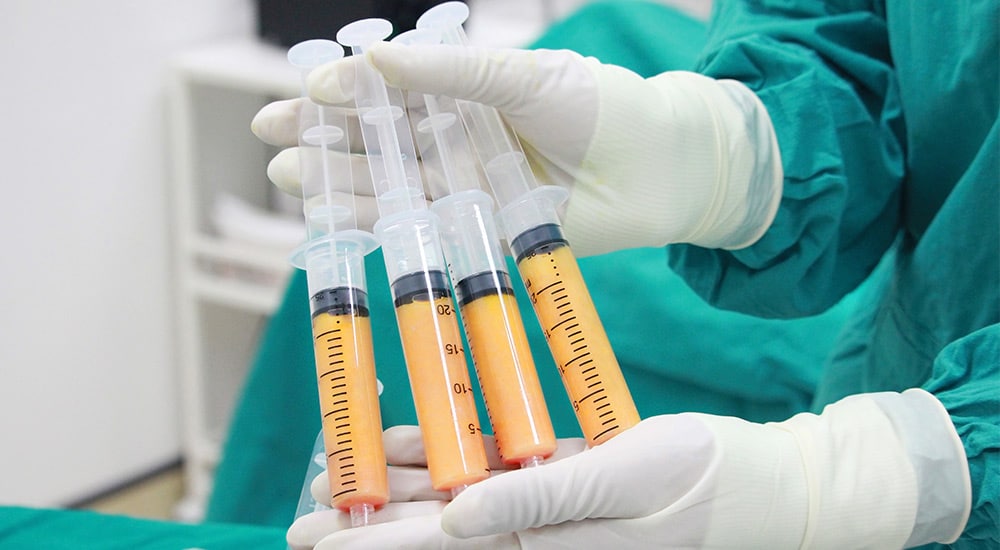
Cost for Fat Transfer
- Surgeons Fee: $6,000 – $10,000 (depends on location of grafting and amount of fat necessary for liposuction)
- Anesthesia Fee: depends on length of procedure
- Hospital and Surgical Facility Fees: depends on length of procedure
- Post-Surgery Garments and Recovery Device: included with surgeon’s fee at The Naderi Center
- Pre-Surgical Medical Clearance and Lab Tests: usually covered by medical insurance
- Medication Costs: usually covered by medical insurance
- Follow-Up Visits: included with surgeon’s fee at The Naderi Center
Preparation for Fat Transfer Surgery
At The Naderi Center we believe proper preparation for surgery helps to optimize outcomes and improve results. We have developed a thorough and comprehensive instruction guide for your reference to better prepare you for a successful surgery process.
Recovery after Fat Transfer Surgery
Generally speaking swelling and bruising are to be expected and final results are typically enjoyed three months post-surgery. Recovery after fat injection generally takes one to two weeks. Recovery after fat grafting varies depending on location of fat transfer as well as volume of fat that was liposuctioned and injected. Recovery after facial fat transfer can be very different than after a fat augmentation of the buttock (BBL). Some swelling, bruising, and redness may occur at both the donor and recipient sites, and swelling may last for several weeks. Due to the necessary overfilling, the face may also appear puffy at first. Patients can usually return to work within 1-2 weeks, though more strenuous activities will need to be postponed for two to three weeks. Some patients may require a second or third follow-up procedure several months apart.
Scars after fat grafting
Fat grafting can help achieve impressive results with the smallest, most inconspicuous incisions and scars. Minimal small scars may form from the liposuction sites where the fat was harvested. Liposuction incisions are very small and usually placed in areas that are hidden. With proper scar management using brown tape and silicone-based topical products, most scars will be barely noticeable.
Testimonial
“Dr. Naderi makes you feel comfortable with being in his office. He discusses what you’re looking for and gives his honest opinion about it. Really feels like you’re a person/patient rather than a number with some money. Office is great and everyone is friendly.”
Risks after Fat Grafting
Fat injections performed in experienced hands are a generally safe procedure with a reasonable post-operative recovery. Swelling, bruising, and small amounts of fluid drainage at incision sites are to be expected. Pain and discomfort after surgery is usually well tolerated with either prescribed pain medications.
Drainage
- Some mild bleeding and/or drainage is not unusual at the incision sites or puncture areas the first few days after surgery.
- Gauze or a light pad can be used to reinforce post-op dressings if drainage occurs.
Bruising
- Most bruises will heal after about 2-3 weeks. The bruise will go from a purplish color to a yellow/green shade as it starts to resolve.
Swelling
- Swelling is to be expected for weeks and sometimes months. The swelling can improve with intermittent rest and use of the headband exercise and physical activity can transiently worsen swelling but is encouraged. Cold compresses will help minimize swelling.
Itching
- Itching at the puncture sites and incision sites is normal for a few days. You may take Benadryl to help with this.
Pain
- It is normal to experience tightness, pressure, shooting pain, soreness, and fatigue for several days to weeks following surgery as you recover.
Sensory Changes In Skin
- You may feel numbness around puncture and/or incision sites. This is normal and should subside after a few weeks.
Weak Or Fatigue
- You may experience some weakness or dizziness especially when trying to stand up to quickly. Take a minute to go from lying down to standing.
- The sensation of feeling lightheaded will get better in a few days as well as by staying well hydrated.
Possible Complications after Fat Grafting Include
- Infection – Spreading redness, worsening swelling, increased drainage or drainage of pus, worsening pain, and warmth at incision site. Temperature over 101 degrees Fahrenheit.
- Excessive Bleeding – If the dressings are saturated with bright red blood and you have to make very frequent dressing changes.
- Risks of general anesthesia
- Skin changes or discoloration
- Poor incision healing or scar healing
- Nerve damage or numbness on the skin or itching sensation
- Facial nerve damage resulting in facial muscle weakness or paralysis
- Need for revision surgery
- Facial asymmetry
Fat Grafting Specialist at The Naderi Center, Dr. Shervin Naderi & Dr. Jessica Kulak
When it comes to fat grafting, you can trust the plastic surgery specialists at The Naderi Center. Double Board Certified facial plastic surgeons, Dr. Shervin Naderi and Dr. Jessica Kulak, have extensive experience with facial fat grafting and routinely perform it as either a solo procedure or in combination with other facial cosmetic surgery.
To find out if a fat grafting is the right procedure for you, contact The Naderi Center to schedule a consultation. Contact the Reston, Virginia office at 703-481-0002 or the Chevy Chase, Maryland office at 301-222-2020. Although The Naderi Center is conveniently located for patients throughout the Virginia, Maryland, and Washington D.C. area, we have many patients from across the United States whom travel to our surgeons because they know they are ultra-specialized in their area of cosmetic plastic surgery. Those outside of the immediate area may request a virtual consultation with our specialists.

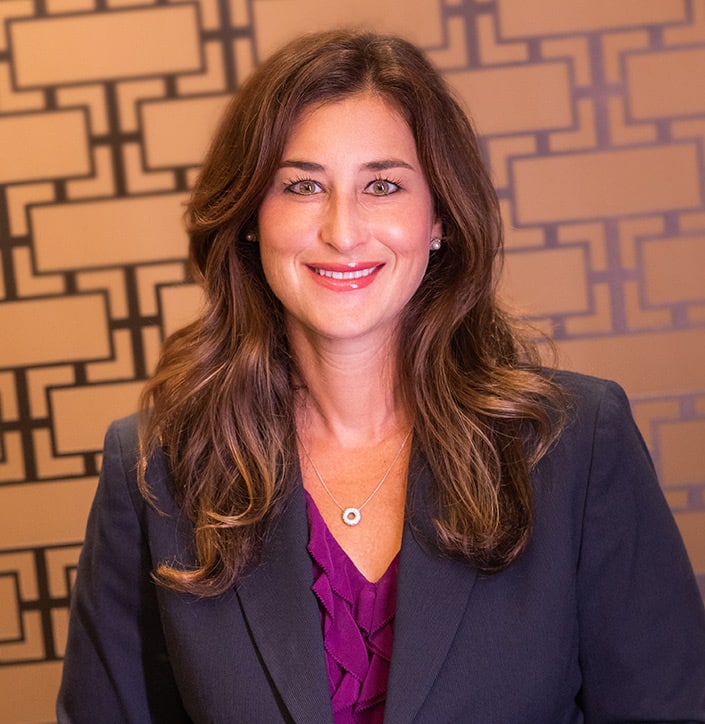
Fat Transfer FAQs
Who is a good candidate for fat transfer?
A good candidate for fat transfer is someone in good overall health with enough excess fat for grafting. Ideal patients want to enhance volume naturally without implants and have realistic expectations about the results.
What should I expect during a fat transfer procedure?
During a fat transfer procedure, fat is first removed from a donor area—such as the abdomen, thighs, or flanks—using liposuction. The fat is then purified before being carefully injected into the target area to enhance volume and contour. The procedure is typically performed under local or general anesthesia, depending on the treatment area. Most patients experience mild swelling and bruising, with initial results visible right away and final results settling over a few months.
How long is the recovery time after fat transfer?
Recovery time varies, but most patients can expect to resume light activities within a week. Full recovery and final results may take a few months as swelling subsides and the transferred fat settles. Your surgeon will provide specific post-care instructions.
Are there any risks or side effects associated with fat transfer?
Risks and side effects can include infection, bruising, swelling, and uneven results. There is also a possibility that not all the transferred fat will survive. Choosing a skilled surgeon can help minimize these risks and ensure better results.
How long do the results of a fat transfer last?
The results of a fat transfer can be long-lasting, with a significant portion of the transferred fat remaining permanently. However, factors such as aging and weight fluctuations can affect the longevity of the results.
What is facial fat transfer, and who performs it at The Naderi Center?
Facial fat transfer (also called fat grafting) is a procedure where your own fat is used to restore lost volume in areas like the cheeks, under-eyes, and temples. Dr. Shervin Naderi and Dr. Jessica Kulak, both double board-certified facial plastic surgeons, perform this procedure both as a standalone treatment and in combination with other surgeries.
How do I know if fat grafting is right for me?
During your consultation, Dr. Naderi or Dr. Kulak will evaluate your facial volume and discuss whether fat grafting is the most effective option for your aesthetic goals. They will also review medical history, expected outcomes, and recovery.
How should I prepare for a fat transfer procedure?
Preparation includes maintaining a stable weight, avoiding smoking, and stopping certain medications as advised by your surgeon. You should also arrange for someone to drive you home and assist you for the first day or two post-procedure.
Can fat transfer be combined with other procedures?
Yes, fat transfer can be combined with other procedures such as facelifts, breast augmentations, or liposuction to enhance overall results. Discuss your goals with your surgeon to develop a comprehensive treatment plan.
What is the typical cost of a fat transfer procedure?
The cost of a fat transfer varies based on factors such as the surgeon’s experience, the complexity of the procedure, and the specific areas being treated. For an accurate estimate, consult with a qualified healthcare professional.
How soon will I see results after a fat transfer?
Initial results are visible soon after the procedure, but swelling may temporarily obscure the final outcome. Most patients see significant improvements within a few weeks, with final results becoming apparent after a few months.
Is a fat transfer procedure safe?
Fat transfer is generally considered safe when performed by an experienced and qualified surgeon. It uses your own fat, reducing the risk of allergic reactions. However, like any surgical procedure, it carries some risks, which should be discussed with your surgeon.
Do fat injections need to be repeated?
On average, approximately 30-50% of the injected volume remains 16 months after the initial fat grafting. Fat injected into the face has a better survival rate than that which is injected into the breasts or buttocks. Additionally, patient factors as well as surgical skill impacts how well the fat cells survive in their new sites. This is why it is often times recommended to perform a series of fat injections and slowly build volume in the desired location. Imagine over-injecting the face and having most of the fat cells survive, this would make a patient look over-injected or what is sometimes called “pillow-faced”. It is wiser to inject a reasonable volume of fat with an initial fat transfer, and then after a few weeks re-evaluate to assess if a second round of fat grafting should be performed. There is also a potential for fat to have an uneven distribution of survival and to experience some areas of hollowness, which can be corrected and smoothened out, with a second round of injections.
What Fat Transfer office is near me?
If you live in the states of Virginia or Maryland, The Naderi Center for Plastic Surgery and Dermatology offers fat transfer among its services. For a full list of services, please visit our Locations page.
